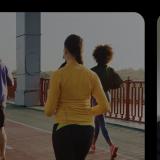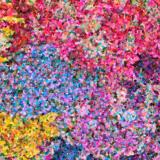'Research can't happen without consumers and communities. Having them involved in research gives valuable insight for research institutions, leading to better health outcomes – because research is about people.'
Professor Sean Taylor, Director of Onemda: Aboriginal and Torres Strait Islander Health and Wellbeing, talks about how as a researcher, he involves communities and consumers, and why you should have your say in the review of the Statement on Consumer and Community Involvement in Health and Medical Research (the Statement).
NHMRC and the Consumers Health Forum of Australia (CHF) are reviewing the Statement – have your say and get involved today.
- Video transcript
[Music plays as an image appears of a black screen with text: Aboriginal and Torres Strait Islander Peoples should be aware that this video may contain images, voices or names of deceased persons]
[Image changes to show Prof. Sean Taylor talking to the camera above a small NHMRC logo, and text appears: Professor Sean Taylor, Director of Onemda- Aboriginal and Torres Strait Islander Health and Wellbeing ]
Prof. Sean Taylor: Imagine losing a limb because your body can't process sugar?
[Images move through to show sugar granules cascading down off a spoon, a blood glucose meter collecting a drop of blood from a finger, and then a red marker circling the word “di-a-be-tes”]
Every 30 seconds someone in the world loses a limb because of diabetes.
[Image changes to show Sean talking to the camera]
And it's happening right here in Australia.
[Images move through to show a split screen of a male placing his phone over a CGM patch below a close view of the CGM patch, and then views of Sean talking to the camera, and then Uluru]
Over 1.5 million Australians live with diabetes, including concerning numbers of Aboriginal and Torres Strait Islander people.
[Image changes to show a glucose monitor collecting a drop of blood on a fingertip, and then the image changes to show a male talking]
The search for better treatment and a cure is far from over.
[Music plays as images move through to show a male doctor talking, the NHMRC logo on a blue screen, an insulin pen, the hands using the pen on their abdomen, and then a setting sun]
I saw diabetes at an early age, how it affected many people in different rural and remote communities and also within my own family.
[Images move through to show Sean talking to the camera, a split screen of hands upturned together above an aerial view of a farmland with a dam, and then Sean talking to the camera again]
Within Aboriginal and Torres Strait Islander research in particular, my role is to engage with communities and consumers around how to inform research or the implementation of research.
[Images move through to show the ocean, different people smiling at the camera, a coconut tree, people smiling at the camera again, rock art, and tracks in red sandy ground]
For example, I use Murray Island organisations and I also use those who have lived experience with diabetes to help inform me how to implement the project in this community and what the consumers want me to look at, especially around cultural governance.
[Images move through to show split screens of two different females laughing, a male with a young male eating, and then images of females laughing, Sean talking to the camera, and a large family]
Through yarning circles, through surveys, through one on one consultations, through adult health checks, and just talking and listening to our consumers to understand what their needs are.
[Image changes to show a medium view of Sean talking to the camera, and then the image changes to show a close view of Sean talking to the camera]
And that's what helped and shaped my overall research.
[Images move through to show female colleagues working together using laptops, a NHMRC logo on a document, a computer screen scrolling data, and then fingers typing on a laptop]
So as a member of the National Health and Medical Research Council Consumer and Community Advisory Group, we had the opportunity to review the Consumer Statement.
[Images move through to show a medium and then a close view of Sean talking to the camera, views of a male talking, and then a female looking at documents beside her laptop]
One of the things that I really wanted to do was link the Consumer Statement to national documents that involve consumers at all levels.
[Images move through to show a patient’s blood pressure being taken, Sean talking, a glucose monitor, doctors speaking with patients, a baby, and researchers using microscopes]
Engaging in those with lived experiences helps me, especially as a researcher, to identify how to better understand their issues, how to better understand what is the actual problem, especially within the health service, and how the health service can meet the needs of our patients.
[Music plays as images move through to show views of a researcher using a laptop, researchers working in a lab, various lap equipment being used, and then a NHMRC booklet]
[Image changes to show an animation of various people spread out across the screen, and then the people assembling at the bottom of the screen]
Research can't happen without consumers and communities.
[Animation image shows blue circles rising from the assembled crowed and morphing into three stacked speech text boxes]
Have your say and get involved.
[Animation image shows a checklist clipboard appearing and the speech boxes merging onto the clipboard, and ticks appearing in boxes on the checklist, and then the NHMRC logo on a blue screen]
Visit our website to find out how to participate in forums and you can also fill in our survey.
[Music plays]
End of transcript.


